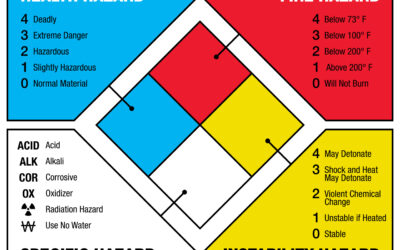International Fire Code Requirements
According to Section 505 of the International Fire Code (IFC), all exterior identification labels, numbers, and letters must be:
- Arabic numbers and/or alphabetical letters
- Visible from the closest road & driveway
- Contrasting in color to its background
- Reflective material & visible in dark or smoky conditions
- Larger than 4 in. and 1/2 in. wide
- Regularly maintained
Additionally, the Center for Safe Schools states that the main entrance should always be labeled as door number “1.” Subsequent doors should be numbered in sequential order. The door numbers should be sequential in a ‘clockwise’ order if viewing the buildings from above the building. Or another way to think of it is; if you are looking at door # 5, then door #6 should be the next exit door to the left. Position the numbers at the top-right of the door when facing from the exterior.
Doors that allow you to enter and exit the building should also be labeled from the interior. These numbers should match the number on the outside of the door. Similarly, they should be reflective for smoky or low light conditions and contrast their background. However, interior door numbers should be placed on the lower-hinge corner for visibility purposes.
Other Tips and Guidelines
These IFC guidelines apply not only to exterior door labeling but also for building address identification. Clear and IFC compliant labeling throughout the building improves emergency response time and expedites the evacuation process. For this reason, it’s important for both the emergency response team as well as the students and staff.
The safety of the students and staff at your school should always be a top priority. While safe and clear fire evacuation maps are an essential component of any emergency action plan, there are many more steps to take when preparing your school for emergency situations. Numbering your doors according to IFC code gets you one step closer to being fully prepared for an emergency.





